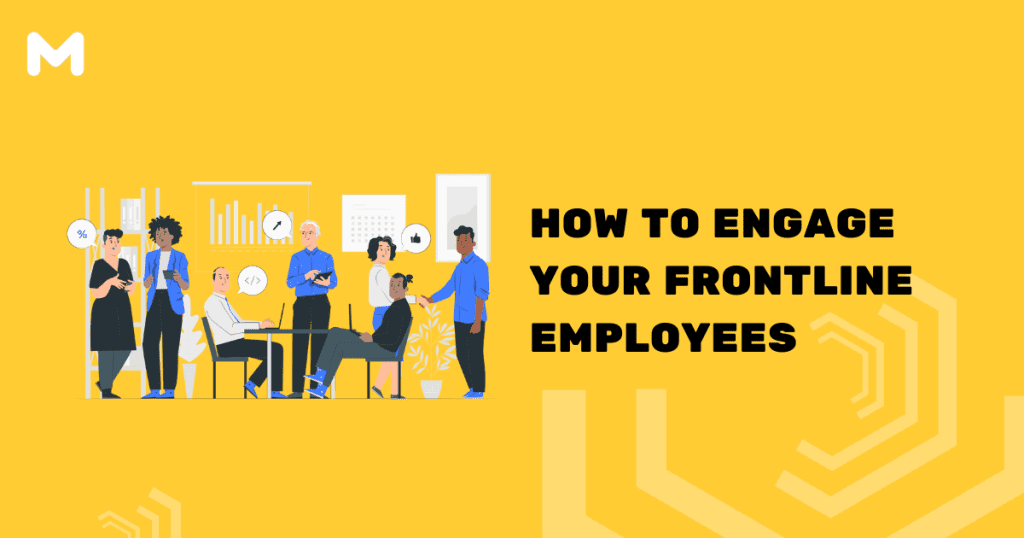Employee engagement is a rather hot topic and not without a good reason. While it is not difficult to understand how engagement drives productivity and boosts business results, it is somewhat difficult to actually define engagement.
How come?
What IS Employee Engagement?
For starters, many businesses confuse employee engagement with employee satisfaction. While there’s no denying that employee satisfaction is paramount, it still doesn’t equal engagement. In fact, there are many instances where the two aren’t even remotely linked.
For one thing, things that drive employee satisfaction often don’t have anything in common with the actual work. For many people, a beneficial salary or desired working hours are sufficient to boost their satisfaction but these two factors hardly connect a person to their job or make them more motivated.
Employee engagement goes beyond satisfaction and renders beneficial outcomes for both the business and the employee. People are motivated to perform better and enjoy every business success knowing they’ve contributed to it.
In a sense, engagement is a sense of connection with the business empowered by strong motivation to drive success. Not only do engaged employees perform their work well, but they also participate in meetings and thrive communicating with their co-workers.
Keeping this in mind, let’s see how you can engage your frontline employees.
Start With Onboarding
Don’t we all know too well the situation where a new hire gets a contract because of previous experience and a good CV?
Well, what’s wrong with that, you may ask, and rightly so.
Nothing whatsoever, but the criterion is somewhat lacking in view of engagement. While people with the right skills will certainly find it easier to get used to the work, that doesn’t necessarily mean they will be engaged from day one.
As we’ve seen in the previous passage, engagement goes way deeper than general employee satisfaction. To actually engage your workforce, you should provide proper onboarding training.
The latter doesn’t only apply to new hires but to new transfers as well. You should make sure that they are brought up to speed and are aligned with business goals while making sure to provide them with the means and tools to achieve their full potential.
Learn From Current Field Service Management Trends
Actual field service management trends will help your employees stay engaged, productive, and happy with their work.
While it is true that trends do change over time, it is also true that some trends are here to stay. That’s why you should ensure to keep up with the trends, notably:
- IoT for asset management
- Cloud-based software for remote work
- Artificial intelligence for business automation
- Inventory management software for supply chains
Other trends may also come to mind, too, so stay tuned for the developments.
Can Field Measurement Software Help?
Field management software can be helpful (mildly put) with overall business processes and their development. However, it can also help you engage your employees simply by making their tasks go more smoothly.
The software generally includes task checklists, price estimation services, OHS checklists and JSAs, invoices, on-site card payments, and photo recording and uploading, but it may also feature additional options.
Make sure to pick the best software for your business as you also need to think about proper training to empower your employees to use it properly. Make sure to pick the best software for your business as you also need to think about proper training to empower your employees to use it properly. Additionally, it’s important to evaluate how the software aligns with your long-term goals and promotes efficiency across your operations. By integrating tools that support sustainable practices for your office, you can reduce waste, streamline workflows, and contribute to a greener work environment. Prioritizing user-friendly platforms will also help ensure a seamless transition for your team.
Stop Information Overload
If you don’t pay attention and don’t plan well ahead, you may end up overwhelming your employees with too much information, which is, obviously, never a good idea.
People may get disengaged quickly if they are expected to learn too much in a short period of time, so take your time devising helpful training methods and ask your employees for feedback (anonymous, for best results).
Use Construction Project Checklists
Finally, relying on construction project checklists to automate your work processes and make it easier for each and every employee to follow through each difficult step of the process is highly advisable.
Construction projects are rather complex, so being able to keep track of each stage with ease is crucial for long-term success and employee engagement.
The checklists should, hence, take into account all five stages, as follows:
Initiation
Deals with request for proposal (RFP) but only after assessing whether the project is worth taking on (whether it’s worth your time, whether your services are a good fit, whether you have enough time to deal with it, and whether you have sufficient resources to go through with it).
Planning
Deals with the scope of the project, proposed budget, quality control plans, and risk assessments, all of which are to be backed up by more detailed plans if the bid is won.
Execution
Deals with the construction phase of a project.
Control
Deals with monitoring the progress of a project.
Closing
Deals with all the aspects necessary for finishing and delivering the project. The stage includes payment and review.
Key Takeaways
Employee engagement is so much more than mere employee satisfaction. In case of complex projects and business processes, it is necessary to provide training and establish regular feedback sessions.
The right choice of tools, proper training (served in small chunks) and overall workforce alignment is a must.


